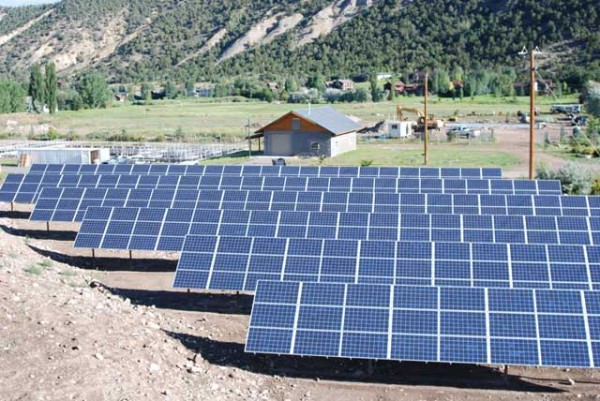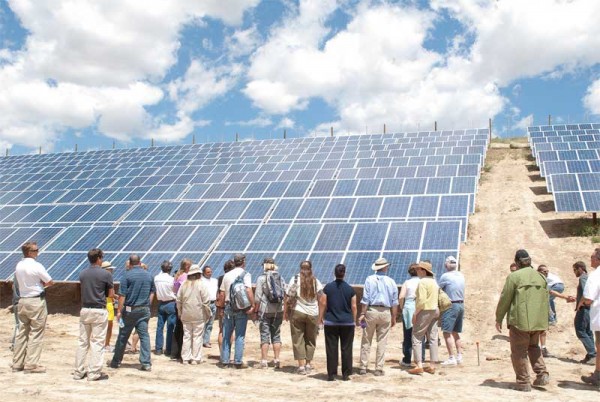It’s safe to say there’s a hunger for community-owned solar power in Colorado.
Thirty minutes after it opened, all 4.5 megawatts of Xcel’s Solar Rewards Community program were filled – and then some – as developers looking to bring solar to utility customers unable to put panels on their own homes and businesses leaped at the new opportunity.

Under the first round of this “solar garden” offering, groups that get in – profits or nonprofits – can develop solar installations up to 500 kilowatts in size (to give you an idea of how big that is, the typical single-home system might be 2 to 5 kW). Xcel pays the developer for the power and the renewable energy credits produced; the developer sells or leases an interest in the installation to subscribers; and subscribers receive credit on their Xcel electrical bill for the energy generated by the system.
“The success of this initial offering and the fact that it subscribed so quickly clearly shows that this is a beneficial and desirable program for our Colorado customers,” David Eves, president & CEO of Xcel’s Public Service Company of Colorado, said in a statement. “Solar Rewards Community makes solar energy available to a new, broad group of customers and we are pleased with the interest shown.”
Xcel this year is looking to offer 9 megawatts through the solar garden program, the maximum allowed by law. Half that amount is going for small solar, while the other half is set aside for competitive bidding among developers looking to build systems ranging from 500 kW to 2 MW. The company said it is seeking approval to offer another 9 MW next year.
Community-based solar isn’t new – the U.S. Department of Energy lists a number of cities, utility districts and the like who offer programs. Those programs are generally small and narrowly structured by the utility itself (as in, say, Arizona). The Colorado program, by contrast, allows the subscriber organization to organize itself within broad outlines (except for low-income subscribers, who must make up 5 percent of each installation’s allocation, subscribers must go in for a minimum of one 1 kW, and no single subscriber can have more than 40 percent of the total).
One organization taking advantage of the new Xcel program in a big way is Clean Energy Collective, out of Carbondale, Colo. While Xcel hasn’t yet released the full roster of organizations accepted into the program, Clean Energy Collective said it was awarded six gardens totaling 2.5 MW – nearly two-thirds of the total.
CEC will need to get local approval for its projects, but the plan is to build installations in Arvada (108 kW); two in Breckenridge (each 500 kW); two in Denver (500 kW and 400 kW, respectively); and one in Boulder (500 kW).

CEC is a relatively old hand at community solar – it claims to have established the first community-owned solar garden in the country near El Jebel, Colo., in 2010, and in 2011, opened the largest such power station in the country near Rifle, Colorado. But the new Xcel program has even it excited.
“Never before has the opportunity to use clean renewable energy been available to so many people so easily,” CEO Paul Spencer said in a staetment. “Community solar is an important part of our energy future, and it’s exciting to see Colorado leading the nation in community-based renewable energy solutions.”